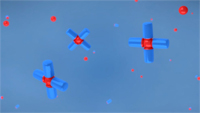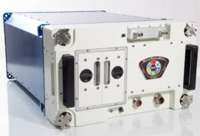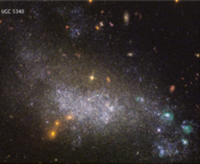Research and Technology
Investigation seeks to create self-assembling materials

When travelling farther into space, clever solutions to problems like engine part malfunctions and other possible mishaps will be a vital part of the planning process. 3D printing, or additive manufacturing, is an emerging technology that may be used to custom-create mission-critical parts. An integral piece of this process is understanding how particle shape, size distribution and packing behavior affect the manufacturing process. The Advanced Colloids Experiment-Temperature-7 investigation (ACE-T-7) aboard the International Space Station explores the feasibility of creating self-assembling microscopic particles for use in the manufacturing of materials during spaceflight.
Spinning Science: Multi-use Variable-g Platform Arrives at the Space Station

Delivered to the International Space Station aboard SpaceX CRS-14, the Multi-use Variable-g Platform (MVP) is a new commercial testbed for centrifuge-based science aboard the orbiting laboratory. Because gravity determines so much of a live organism’s behavior and growth, centrifuge-based experiments have long been a part of biological investigations in space. MVP greatly expands commercial and research opportunities in low-Earth orbit.
Tiny Satellite’s First Global Map of Ice Clouds

Looking at Earth from the International Space Station, astronauts see big, white clouds spreading across the planet. They cannot distinguish a gray rain cloud from a puffy white cloud. While satellites can see through many clouds and estimate the liquid precipitation they hold, they can’t see the smaller ice particles that create enormous rain clouds. An experimental small satellite has filled this void and captured the first global picture of the small frozen particles inside clouds, normally called ice clouds which are start as tiny particles high in the atmosphere.
Astronomers Release Most Complete Ultraviolet-Light Survey of Nearby Galaxies

The Hubble Space Telescope is a project of international cooperation between NASA and ESA (European Space Agency). The researchers combined new Hubble observations with archival Hubble images for 50 star-forming spiral and dwarf galaxies in the local universe, offering a large and extensive resource for understanding the complexities of star formation and galaxy evolution. The project, called the Legacy ExtraGalactic UV Survey (LEGUS), has amassed star catalogs for each of the LEGUS galaxies and cluster catalogs for 30 of the galaxies, as well as images of the galaxies themselves. The star cluster catalogs contain about 8,000 young clusters. The star catalogs comprise about 39 million stars that are at least five times more massive than our Sun. Stars in the visible-light images are between 1 million and several billion years old; the youngest stars, those between 1 million and 100 million years old, shine prominently in ultraviolet light.
Solar System | Mercury | Venus Moons | Earth | Mars Moons | Jupiter Moons | Saturn Moons | Uranus Moons | Neptune Moons | International Space System | ISS Research | Moons of the planet | Magnetosphere | Regions Of Comets | Space Station Glossary | Space Station Abbreviation | Space Station Sitemap | Asteriods | Contact Us